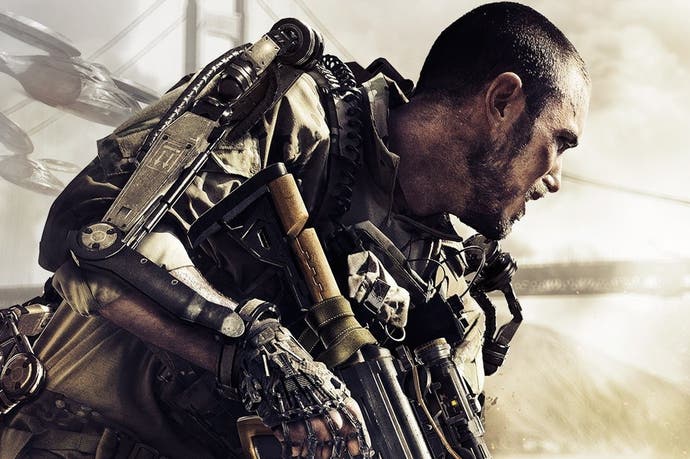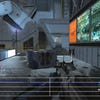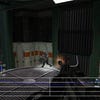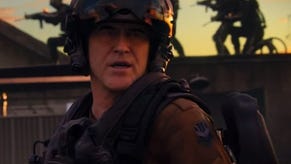Last-gen revisited: Call of Duty Advanced Warfare
Stripped of its next-gen rendering tech, can PS3 and Xbox 360 still deliver the core gameplay experience?
Just how much of a generational leap are the Xbox One and PlayStation 4 delivering in terms of the holiday season's hottest games? That's a topic Digital Foundry aims to explore this week as we return to some of Q4's biggest titles, stacking the current-gen versions up against their last-gen counterparts. Are they still good games, worthy of consideration if you've not upgraded? And just how much that is new and exciting is being delivered by the new wave of consoles?
Built for PS4 and Xbox One hardware, Sledgehammer Games' new Call of Duty engine births a much-needed tech revolution in the series. Top-end features like enhanced motion capture, subsurface scattering, and a physical-based approach to lighting all make the cut. It's a surprise, then, to find Xbox 360 and PS3 versions also on the shelves - but does the culling of these features leave the core gaming experience intact, or is the end product a very different game?
There's an argument that, while the new wave of games consoles has handed in some exceptional graphics, in many ways the gameplay feels as though it hasn't moved to anything like the same extent. Looking at Advanced Warfare on PS3 and Xbox 360 allows us to put the theory to the test. The results aren't always pretty, but the basic framework of Advanced Warfare still demonstrably holds together. Judging by the first few campaign missions, PS3 and 360 owners are given the same core level designs set in Seoul and Africa, with the same set-pieces involving drone swarms and trundling mechs, and even the same segments of cinematics. Backing that up, we're looking at a 60fps target too - a staple for the series - but with mixed fortunes on the PS3.
This is where last-gen Advanced Warfare takes a sour turn. Sony's ageing PS3 simply does not deliver this game at a fast enough update, producing one of the choppiest campaign modes we've seen from the series to date. The frame-rate range is between 45 and 60fps on Sony's hardware, typically in between the two during any shoot-out, with heavy stuttering making control inputs stick. The 360 version pulls off a much tighter frame-rate, though often shy of 60fps, and joins the PS3 with its choice to engage full v-sync.
Based on our video below, there's no question that these games are buckling compared to the PS4 and Xbox One forerunners. But what else is lost in translation?
Alternative analysis:
For those keeping track of Advanced Warfare's development, this struggle shouldn't come as a surprise. In a recent interview with Sledgehammer's co-founders, the project is proudly described as being based on brand new technical underpinnings, "unrestricted by last-generation hardware constraints". With the studio weaving in specific rendering features for PS4 and Xbox One, it's left to High Moon Studios (of Deadpool and Transformers: Fall of Cybertron fame) to piece together PS3 and 360 versions based on raw code and assets designed for an engine a generation ahead. No small task.
The list of visual downgrades is too numerous to tally. To reel off the biggest points quickly, each console renders at 1024x600 (typical of last-gen series outings), with a vastly simplified lighting model, removed objects and background details, bilinear texture filtering, and reduced character geometry - notably missing the PS4 and Xbox One's subsurface scattering for skin. The result is one of the most stark cross-generational divides in recent memory.
The loss in character detail is a big one, and genuinely affects the heft of its cinematic spectacle. Characters enact the same motion-captured scenes as on current-gen, but the presentation is wildly altered. From Kevin Spacey downwards, every face is wrapped in low-resolution normal maps that gives each a gormless, pasty look. It sorely misses the photorealistic modelling on PS4 and Xbox One too, particularly in skin tone, while the snipping of motion blur and bokeh depth of field brings a dryness to each scene's delivery.
But does this actually affect gameplay? The immediate answer is no: Advanced Warfare is stripped of the major rendering passes used on current-gen, but each level still unfolds as its always has. Without the physical-based lighting model on PS3 and 360, the Seoul stage is unmistakably plain and bright, but no more or less a challenge as a result. Equally, physics-based particles and transparencies are cut from the opening landing scene, and textures downgraded, but none of this affects the game balance at all.
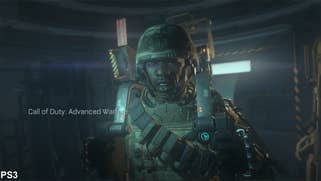
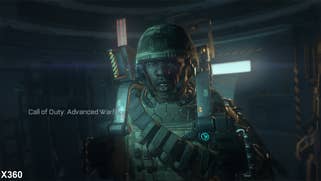
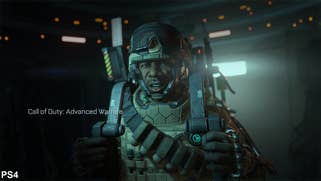
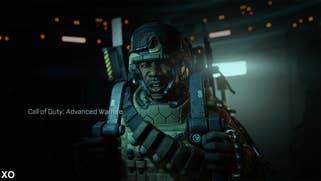


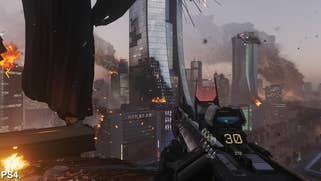
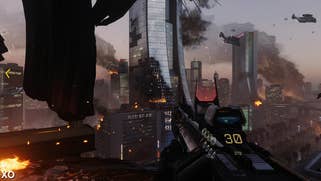
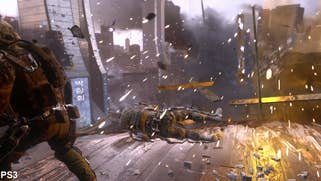

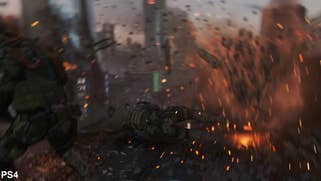
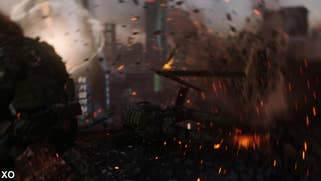

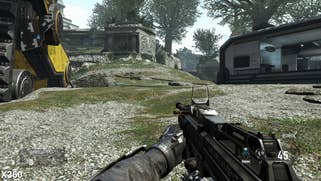
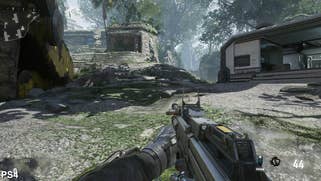


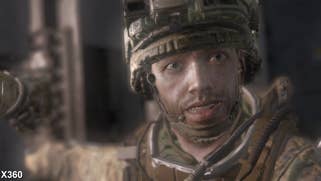
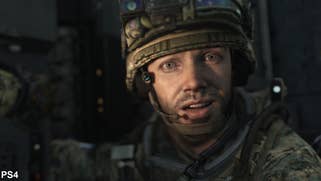

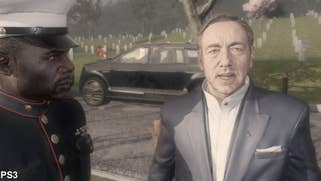


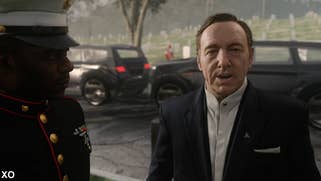
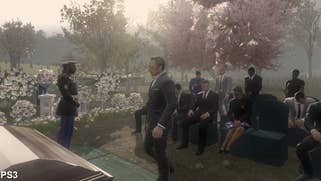
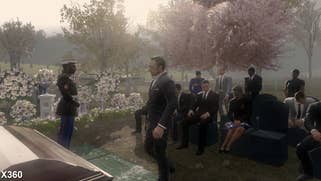
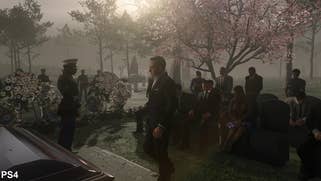

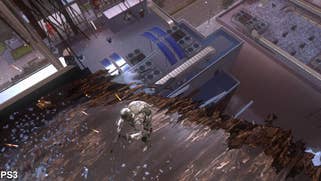
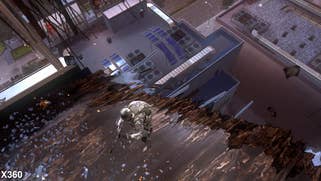
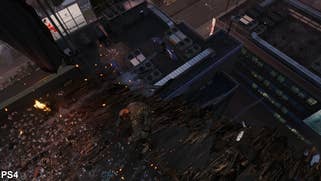
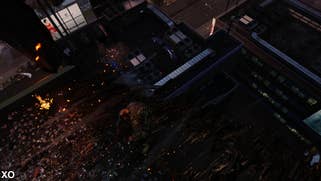
However, it's a different story for the multiplayer mode, and for a few reasons. Across all its included 13 maps, the heart of Advanced Warfare's engine still ticks at a fair rate on the 360, and plays with the same cut-down visual setup as the campaign with v-sync again engaged.
But the deal-breaker is in PS3's multiplayer performance. Stages like Detroit and Instinct suffer from shocking performance levels, on par with the campaign's worst, and in each case the PS3 chugs along at around 45-50fps. It's a tangibly different competitive experience to the 60fps average of Xbox One and PS4 versions, and even a relatively smooth 360 edition, sparing its low 50fps dips on heavy gunfire.
Even a lowered player cap, going from 18 on current-gen consoles to just 12 on PS3 and 360, can't save Sony's platform from these sustained dips. As it happens, this detracts from the scale of larger Ground War battles, though it fits into the template of existing Call of Duty games on these formats.
On top of this, Sledgehammer Games' engine benefits from the 360's ability to stream from HDD, as enforced by a mandatory disc two install. In most cases this cuts the loading times in half from the PS3 version, with complex stages like Instinct taking Sony's format up to 36 seconds to fully load on a stock drive. The PS3's reliance on streaming from its Blu-ray drive also affects the campaign cinematics; one stylish 'white flash' transition on the second level taking the console a few seconds to perform, while other platforms handle this instantly.
On balance, both PS3 and 360 remove so much from Sledgehammer Games' current-gen renditions of Advanced Warfare, it's often staggering to see the contrast. The new consoles have totally delivered the generational leap in visuals we would expect, but the basic package in terms of the core gameplay is in place for the older hardware, despite glaring frame-rate issues on PS3 and a lowered competitive player count for both. It can also be argued that without the existence of superior versions on newer hardware, this would still rank as a respectable last-gen entry in the series, especially compared to Ghosts before it.
The technical merits of PS4 and Xbox One hold up here, though. All the features promised to belong exclusively to current-gen consoles are, expectedly, axed for the older formats; the most striking being the way lighting is rendered. But developer High Moon Studios has been handed a near-impossible task here, and for the 360 edition at least, it receives a passing grade on the grounds of solid multiplayer frame-rate. The engine's issues adapting to PS3 are all too evident in similar tests, however. Where the 360 can just run Advanced Warfare in a simplified form at 60fps, Sony's older hardware is clearly stretched too far.
Looking back at the Eurogamer review, Advanced Warfare received criticism for being "derivative and unwilling to move away from the safety of formula". From our perspective, it seems that COD has indeed moved on, with a radical revamp to the visuals that modernises the game, delivering more of the visual bombast and more of the blockbuster thrills - but comparing current-gen to last-gen demonstrates pretty conclusively that the gameplay hasn't evolved in step, something we hope to see addressed with next year's offering.
